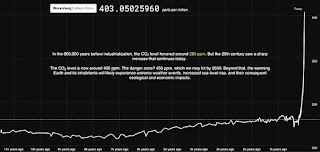PRT’s CONUNDRUM
Why the
business case for personal rapid transit is blocked.
Lawrence J.
Fabian, Trans.21 and Stan Young, NREL
May 2016
Urban transport policy-makers have new street-based mobility
options. The emergence of robo-cars, robo-cabs, robo-delivery vehicles,
robo-vans and robo-buses is upon us. How real and safe and affordable they will
be remains to be seen. The major economic appeal of such possibilities --
accompanied by ride-sharing and community-based mobility networks -- is that
they use already existing streets.
 |
The Morgantown PRT has served
West Virginia Universitysince the 1970s. |
Driverless cars are bringing fresh air to discussions of envisioning
and supplying urban mobility. They clash with PRT promoters who speak with bravado
and hypothesis. They promise a sort of mobility paradise, often with references
to far-off places like India, China and Sweden. Upon closer inspection, these are
often little more than carrots for investors.
PRT promoters speak in the conjectural tones of “could” and
“would”. Or “can” and “will”. After 50
years of such conversations, we cannot truthfully state in the present tense: PRT
satisfies urban transport needs. At best, we can point to West Virginia
University, which is served by a USDOT demo from the 1970s and a few recent
shuttles overseas.
The Project Case Dilemma
Then and today the conundrum of PRT is in the very business
case that must be made. Only a large network brings out the potentially
significant benefits of non-stop service scheduled in real time that is
possible with off-line stations.
By Merriam-Webster, a conundrum
is
a confusing or difficult problem that has only a conjectural answer. What
blocks PRT interest is that a large commitment to extensive guideway and
stations is necessary long before the benefits are felt. As common with large infrastructure
projects, big bucks go out long before substantial payoff.
 |
An early plan for Fleminsberg, Sweden had
about twenty stations. |
Urban residents, elected officials and local technocrats
know that most US cities abound in streets, alleys, utility rights-of-way, and
local arterials, much of them hardly used. In countless residential blocks and
old retail and industrial districts that predate Eisenhower’s Interstate
Highway System which reoriented urban development around interchanges, there is
excess street capacity.
Adjoining many stretches of multi-lane Interstate and other
expressways are little-used local streets. They offer ample opportunities for
local robo-services. In contrast to PRT’s conundrum, the scenario of robo-cars
shaped for public good becomes compelling, especially where icy winters are not
a factor. An entrepreneur can start without major investment in infrastructure.
Expansion - perhaps with guideway for longer trips -- comes later if and when
desirable.
Ordering Our Thinking
NHTSA in 2013 published an official classification of levels
of vehicle level of automation. It is well used in technical transport discussions. Yet we lack a comparable classification of street
environments within which specific robo-services are to operate. The service
domain can be in private property or civic campuses. ITS and AUVSI engineers
increasingly talk not just of vehicle-to-vehicle communications. They foresee two-way
communications between vehicles and fixed infrastructure that is itself
intelligent and interconnected, with data flowing to a control center somewhere
creating “big data”.
Someday a national center in Omaha or in the “cloud” may
super-monitor all street movements. That is a way far off in the future. For
now, it is helpful to establish a policy-friendly categorization of the two-dimensional,
geographic areas or domains over which specific robocar services will operate.
Managers of private campuses of a square mile or two, for
example, have pretty full control over their own property. A fleet of robo-cars
that go no faster than 15 or 25 mph will do just fine. They don’t need to put them out on the busy
highways. The fleet can remain on campus roads, paths and parking lots. This is
Level 0 of robo-domains: limited and controlled, private property (including
some governmental owners like ports and the military).
Enter the Smart Context
Remarkable progress is being
made in sensing and visioning systems. Cutting-edge thinkers are developing
visions of smart cities with electronic markers dotting the landscape to
facilitate (or duplicate) vehicle tracking and controls.
Smart vehicles watch out for
cars, kids and other obstacles on the running surfaces around them. Smart
infrastructure can tell them a lot more. Local markers can communicate real-time
network conditions upstream perhaps diverting vehicle to a better itineraries. Simple
smart infrastructure can be confined to a parking complex, or serve fleets circulating
within large university and medical complexes. More ambitious thinking takes on
large-scale traffic management for entire metro regions.
USDOT’s SmartCity
Challenge aims to bring these potentialities to a single demo city.
Two-Dimensional “Robocaricity”
Projects
 |
Local mobility companies can
operate at Levels 1 or 2, here
in cooperation with the transit agency. |
The performance and safety of
robocars in cities will increasingly depend on smart infrastructure. There is a
significant scaling effect. How large and complex are the service domain?
Here are six categories of
Robo-Service domains:
Level 0 Secured,
managed private or semi-private campuses
Level 1
Supervised activity centers, probably mixed uses that rely in part
on public streets
Level 2 Urban
districts with firm boundaries (physical or by policy) with residential and/or
employment populations of, say, 5000 to 50,000
Level 3 An
entire city - central or suburban - but within the jurisdiction of a single
legal entity or municipality, aka City Hall
Level 4 A
metropolitan area with populations of, say, 0.1-10 million
Level 5 A
very large metropolitan or inter-regional with significant long-distance trips
(say, 10+ miles). In a few decades, policy makers may want to think about a
sea-to-sea domain as the 6th and international as the 7th
levels.









